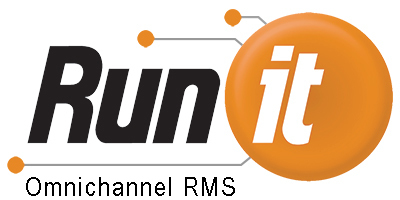Having trouble making a profit off of some not-so-popular stock items? You’re not alone. Items that can no longer be sold are known as dead inventory. The lack of sales may be due to poor planning, irrelevant inventory choices, or shifts in seasonality. Don’t fret — nearly 30% of the inventory is dead even in companies with highly specialized inventory management tactics.¹
Nonetheless, dead inventory can create substantial losses for stores, in addition to preventing retailers from building customer relationships. The unsold goods reflect occupied shelf space in a warehouse or factory that could be used for potentially more profitable products.
So, how can retailers remedy the problem of unsold merchandise without completely losing out on profit? The best ways to generate a return on investment include marketing the unsold inventory with more current goods, exciting customers with giveaways, planning returns to the supplier, or making donations to a community in need.
Mix ‘n’ Match in a Bundle
Creating an enticing bundled offering filled with relevant products and selling the items at a discounted price gives retailers the opportunity to move a high volume of items along the sales funnel quickly and efficiently, avoiding an unoptimized retail space conflict.² They will no longer need to bear the items’ hidden costs, freeing up warehouse space and saving on costs.
Bundling is a tactic that often helps with product ambiguity — referring to the overall cost of a product bundle when shoppers don’t have access to the individual prices. With this option, retailers can combine a cheaper item with an expensive, higher-margin product without disclosing individual prices. This results in a perception of greater value for money. A customer can perceive the bundle as being cheaper than if they bought both items individually.
Packaging in bundles is a great marketing tactic for the always-on-the-go customer. Shoppers will receive the added benefit of a variety of items previously packaged, saving them valuable time while retailers’ inventory clears up in anticipation of a new season with added trends.
Giveaways are a fun way to spark interest, and incentivizing customers with a “free gift” if the minimum purchase requirement is met leads to both a delighted shopper and a relieved store manager. Offering quality value in return for customers’ hard-earned-money is an ideal way to get customers eager to spend. The added touch is also a unique way to build customer loyalty.
Sign, Seal, and Deliver a Return
If a retailer’s items lack selling power despite bundle and giveaway incentives, you can also try and return those items back to the vendor to save money. As long as the return policy is flexible, the vendor may allow a return. There is the possibility, however, that the retailer will not receive money back. Rather, the vendor will issue a future credit.
There is a small caveat in conjunction with this method, however — returns can be costly. Shipping and handling costs when sending goods back to the vendor can eat at profit margins. Additionally, the longer an item stays out of circulation, the less value it has. Vendors are keen on this fact, and may only take back unsold items at a price much lower than the original sale price.
Donate and Spread the Wealth
Retailers can consider donating to a local homeless shelter or thrift store if they’re feeling generous. Put in perspective, this action is especially important and worthwhile because only about 15% of U.S. inhabitants donate clothing, causing the rest of the discarded goods to fall into landfills and result in a pollution issue.³ The pollutants often sit in untouched piles long-term.
The retailer may receive money for the items they are exchanging at the thrift store, but this all depends on the current demand, the clothing style, and the discretion of the thrift store staff.
Avoiding Past Mistakes in the Future
Once all dead inventory has been cleared out, it is important for retailers to take proper precautions to avoid being stuck with unsold merchandise yet again. This is where Runit’s inventory management system comes to the rescue. This tool gives retailers two main advantages — it helps the business make better buying decisions in general, and it aids retailers in moving items between stores more easily, making the best use of floor space.
Fundamentally, data-driven updates allow for the reduction of inventory across locations while correctly timing the need for stock replenishment, thus creating a true omnichannel retail strategy. Successful businesses require a system that helps retailers buy fewer items that they’ll end up marking down, and assists them with buying the right quantity of items at the most opportune time. It’s a disastrous and costly mistake to have unsold merchandise sitting on the store floor, forcing retailers to slash prices and put these items on clearance — evidently leading to major losses.
Secondly, when retailers own multiple stores, they often have to move merchandise from one store to another quickly and efficiently. This is because they may find that a particular item sells better at a different location. For example, a shop that carries primarily light, breezy clothing would see greater success in a city with a year-round warm climate, as opposed to a city with warm weather for only a quarter of the year. A quality inventory management system helps retailers come to that conclusion quickly, and makes that switch occur seamlessly, as to not disrupt daily business operations. Retail businesses are incredibly labor-intensive, and there are mass quantities of merchandise that need to be tracked and moved. Inventory management acts on this data and saves retailers precious time and money in the process.
To eliminate the possibility of a dead inventory dilemma and to learn how to optimize your store for success through Runit’s integrated inventory management and RMS solutions, contact a member of our team today to get started.
Sources
¹https://www.inddist.com/operations/article/13772283/what-is-the-real-cost-of-dead-inventory
²https://www.stitchlabs.com/learning-center/deadstock-meaning-avoid/
³https://www.theatlantic.com/business/archive/2014/07/where-does-discarded-clothing-go/374613/






